Today’s Current Affairs: 7th Apr 2023 for UPSC IAS exams, State PSC exams, SSC CGL, State SSC, RRB, Railways, Banking Exam & IBPS, etc
Table of Contents
116th Birth Anniversary Of Babu Jagjivan Ram:
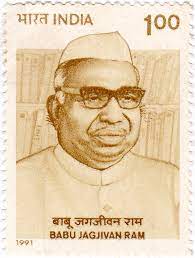
He was a national leader, a freedom fighter, a social justice crusader, a champion of the depressed classes, and an outstanding Parliamentarian.
- In 1931, he became a member of the Indian National Congress (Congress Party).
- He was instrumental in the foundation of the All India Depressed Classes League.
- All India Depressed Classes League: an organisation dedicated to attaining equality for untouchables, in 1934-35.
- He was a champion of social equality and equal rights for the Depressed Classes.
- He served in Nehru’s cabinet in the posts of minister for communications (1952–56), transport and railways (1956–62), and transport and communications (1962–63).
- He served as minister for food and agriculture (1967–70).
- In 1970 he was made minister of defence.
- He later served as the Deputy Prime Minister of India (1977–79).
- Jagjivan Ram was a member of the Parliament uninterrupted from 1936 to 1986 (40 years) and this is a world record.
- He also holds another record for being the longest-serving cabinet minister in India (30 years).
5th International Conference On Disaster Resilient Infrastructure:
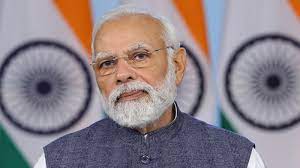
The latest conference, the 5th International Conference on Disaster Resilient Infrastructure (ICDRI) 2023, was held on 4th and 5th of April 2023 in New Delhi, India.
- It is the annual conference of the Coalition for Disaster Resilient Infrastructure (CDRI) and its partners.
- International Conference on Disaster Resilient Infrastructure 2023 hosted by India.
- The Coalition for Disaster Resilient Infrastructure (CDRI) is a multi-stakeholder global partnership of national governments, UN (United Nations) agencies and programmes, multilateral development banks and financing mechanisms, the private sector, and knowledge institutions.]
- The Prime Minister of India launched CDRI during his speech at the UN Climate Action Summit in 2019.
- It aims to promote the resilience of new and existing infrastructure systems to climate and disaster risks in support of sustainable development.
- Members: 30 countries and 8 organizations.
- The CDRI Secretariat is based in New Delhi, India.
- It brings together member Countries, organizations, institutions and infrastructure actors and stakeholders to strengthen the global discourse on disaster and climate-resilient infrastructure.
- The ICDRI 2023 will focus on charting these solutions and pathways to Shaping Resilient Infrastructure.
- It aims at delving into practices of creating risk-informed systems, resilient infrastructure assets and innovative financing to deliver infrastructure needs.
- The conference will feature the progress of the Biennial Report on Global Infrastructure Resilience, the collaborative delivery mechanism of IRIS with SIDS, and the operationalization of IRAF.
Ladakh’s Wood Carving : GI Tag
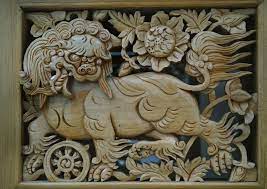
In a major recognition for Ladakh, its wood carving has been granted the Geographical Indication (GI) Tag.
- Ladakh’s wood carving has been known for its intricate designs and unique patterns.
- The designs and unique patterns, are mostly inspired by Buddhist themes and motifs.
- The wood carvings are made from local wood such as willow and apricot.
- They are often used for decorating doors, windows, and other household items.
- The unique form of wood carving which has received a GI tag is concentrated in the Wanla and Cjoglamasar districts of Leh.
- The craft has a distinct cultural and religious influence.
India’s Economic Growth Rate Forecast : World Bank

The World Bank has released a report titled “South Asia Economic Focus: Expanding Opportunities: Toward Inclusive Growth,” which provides an economic forecast for India, Sri Lanka, and Pakistan.
Major Highlights of the World Bank Report:
- India’s growth rate has been downgraded to 6.3% for FY 2023-24 ,and the report cites high borrowing costs and slower income growth as the primary reasons for this downgrade.
- The female labour participation rate and the size and productivity of the informal sector are also concerns in India.
- However, the services sector and the construction sector are the fastest-growing industries in India, with strong investment growth and high business confidence.
- India’s growth rate is expected to grow at 6.4% in FY 2024-25, which is an upgrade of 0.3 % points from the previous forecast.
- Sri Lanka experiencing a contraction of -4.3% in 2023 and negotiating a USD 3 billion loan from the IMF, while Pakistan is forecasted to have a growth rate of 0.4% for the year ending June 30, 2023.
Avalanche Hit Sikkim’s Nathu La:
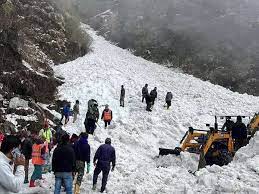
A massive Avalanche hit Sikkim’s Nathu La.
- An avalanche is a sudden, rapid flow of snow, ice, and debris down a mountain or slope.
- It can be triggered by various factors such as heavy snowfall, rapid temperature changes, or human activity.
- Many regions that are prone to avalanches have specialized teams that monitor and control avalanche risks by using various methods such as explosives, snow barriers, and other safety measures.
- Types:
- Rock Avalanches (which consist of large segments of shattered rock),
- Ice Avalanches (which typically occur in the vicinity of a glacier),
- Debris Avalanches (which contain a variety of unconsolidated materials, such as loose stones and soil).
Nathu La (Pass)-Nathu La:
- It is a mountain pass in the Himalayas in the East Sikkim district.
- It connects the Indian state of Sikkim with China’s Tibet Autonomous Region.
2023 Water Conference:

In the United Nations, the 2023 Water Conference was held in New York on March 22-24 in which participant members were informed about W12+ Blueprint and its potential.
- W12+ Blueprint is a UNESCO platform that hosts city profiles and case studies of programs, technologies, and policies that address common water security challenges.
- It is an informational database for solutions to urban water challenges.
- Aim is to create a tool that provides insight into how to address common urban water challenges through easy-to-read case studies.
- Lessons learned from the other W12+ Programs will be incorporated and highlighted within the Blueprint.
- It will house information on best practices, encourage further knowledge exchange, and become a “virtual Hub” for urban water security solutions globally.
- Cities listed under this blueprint from India are Chennai, Bengaluru, Mumbai and Pune.
- The water conference brings together people from different countries and organizations to work together on solving global water challenges.
- Water problems are usually local, but by working together, countries can learn from each other, share technology, and invest in solutions.
- The UN 2023 Water Conference’s theme, “Our watershed moment: uniting the world for water,” aimed to support the achievement of water-related global goals and objectives, including those enumerated in the 2030 Agenda for Sustainable Development.
Pair Of Quasars Discovered:

The Hubble Space Telescope recently discovered a pair of quasars from the early universe.
- A quasar is an extremely active and luminous type of active galactic nucleus (AGN).
- An AGN is nothing more than a supermassive black hole that is active and feeding at the center of a galaxy.
- The brightest quasars can outshine all of the stars in the galaxies in which they reside, which makes them visible even at distances of billions of light-years.
- Quasars are thought to form in regions of the universe where the large-scale density of matter is much higher than average.
- Most quasars have been found billions of light-years away.
- Quasars emit energies of millions, billions, or even trillions of electron volts.
- This energy exceeds the total of the light of all the stars within a galaxy.
Kurmi Community Protest:

Train services were recently disrupted in Bankura, Purulia and West Midnapore districts of West Bengal following rail-blockade agitation by the Kurmi community.
- Kurmi community is traditionally a non-elite tiller caste in the lower Gangetic plain of India, especially southern regions of Awadh, eastern Uttar Pradesh and parts of Bihar.
- The Kurmis came to be known for their exceptional work ethic, superior tillage and manuring, and gender-neutral culture, bringing praise from Mughal and British administrators alike.
- Currently, in Odisha, West Bengal and Jharkhand, the Kurmi community is classified under the Other Backward Classes group with the Odisha government also recognising the community under the Socially and Educationally Backward Classes.
- State governments in Jharkhand and West Bengal have repeatedly recommended the inclusion of this community in the ST list.
Vaikom Satyagraha:
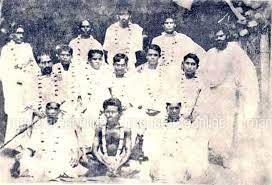
As the year 2024 marks the centenary of the Vaikom Satyagraha, Chief Minister of Kerala and Tamil Nadu jointly inaugurated the centenary celebrations.
- Vaikom Satyagraha was a movement in Travancore (modern-day Kerala) for temple entry of the depressed classes.
- It took place near the Shiva Temple at Vaikom, Kottayam district, Kerala during 1924-25. Vaikom was at that time a part of the princely state of Travancore.
- The movement began on 30th March 1924.
- At the Vaikom Mahadeva Temple, there was a board that denied the entry of “lower caste” people (avarnas).
- The Satyagrahis made batches of three and entered the temple.
- They were resisted and arrested by the police.
- Gandhiji, Chatampi Swamikal and Sree Narayana Guru supported the movement.
- The movement gained prominence in the whole of India and support came from far and wide.
- The Akalis of Punjab supported by setting up kitchens to provide food to the Satyagrahis.
- Even Christian and Muslim leaders were in support of the movement. However, Gandhiji was not entirely convinced by this as he wanted the movement to be an intra-Hindu affair.
- On Gandhiji’s advice, the movement was taken back temporarily in April 1924.
- After discussions with caste Hindu people failed, the leaders again started the movement.
- Leaders T K Madhavan and K P Kesava Menon were arrested.
- E V Ramaswami Naicker (Periyar) came from Tamil Nadu to support the movement and then he was arrested.
- On 1st October 1924, a group of savarnas (forward castes) marched in a procession and submitted a petition to the Regent Maharani Sethu Lakshmi Bai of Travancore with approximately 25000 signatures for allowing entry to the temple for everyone.




